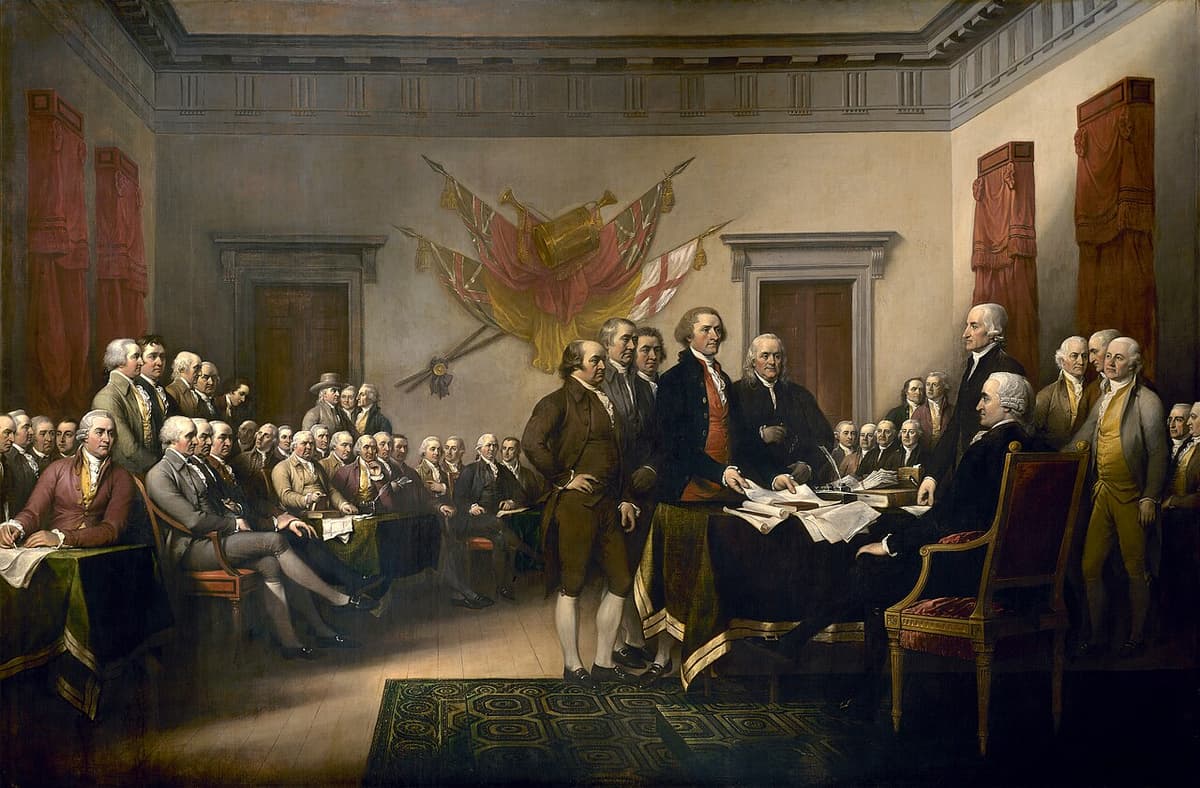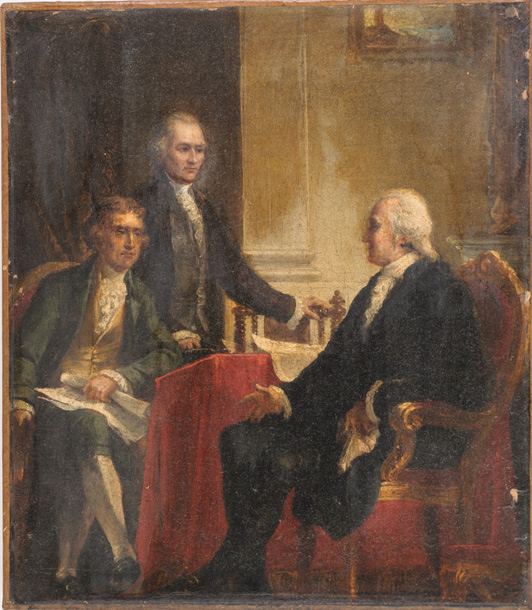How Washington and Jefferson’s ‘Revolutionary Friendship’ Helped Forge America
These two Virginia planters and slaveholders understood that in the establishment of a democratic republic, the system of privilege that promoted their own prominence would eventually fade.

‘A Revolutionary Friendship: Washington, Jefferson and the American Republic’
By Francis D. Cogliano
Harvard University Press, 368 pages
Francis Cogliano begins his parallel lives biography by observing that the split between Washington and Jefferson, which occurred in the 1790s fracas between Federalists and Republicans, has obscured an appreciation of the strong friendship and political consanguinity of these two founding fathers in the years that led up to and included the American Revolution.
These two Virginia planters and slaveholders understood that in the establishment of a democratic republic, the system of privilege that promoted their own prominence would eventually attenuate — although Washington retained a devotion to rank that Jefferson disparaged, and yet Washington had a more capacious understanding than Jefferson of what would happen when slavery no longer existed.
At the beginning of their working friendship, Washington relied on Jefferson, a man of superior education and cosmopolitan outlook, who became the natural choice for Secretary of State in Washington’s first cabinet. Jefferson, shying away from public affairs, was brought into government by a persistent Washington, who nominated Jefferson for the cabinet even after he had declined the honor. No one rejected a Washington invitation, as both Washington and Jefferson well knew.

Mr. Cogliano shows that Jefferson’s initial lack of enthusiasm for the Constitution played a role in his distrust of the Federalists who sought to establish a strong central government in contradistinction to Jefferson’s Republicans who believed democracy was best preserved in the states and among office holders close to the people who elected them.
Without a strong central government, Washington feared anarchy, which he equated with large public protests that devolved into events like Shays’s Rebellion, a protest over taxes used to pay off government debts. Jefferson defended protests, and even rebellions, as expressions of the popular will that checked the overreach of government power.
As Mr. Cogliano shows, Jefferson always wanted to believe that Washington shared his beliefs, and when Washington sided with Hamilton and told Jefferson that Hamilton was not a closet monarchist, Jefferson attributed Washington’s disagreement with him as the lamentable result of a once great man now ailing and not in command of all his faculties.
Mr. Cogliano does not take sides. For example, he never weighs in on the Jeffersonian dictum that the government which governs best governs least, but as a shrewd biographer he points out that when Jefferson accused Washington of being virtually senile, Jefferson was indulging in wishful thinking.
Perhaps the most profound feature of Mr. Cogliano’s book is his treatment of how Washington and Jefferson developed their anti-slavery positions without ever, in fact, freeing their slaves while the two men were alive. Neither leader believed the public mind was prepared for an end of slavery, which would not disappear before a majority of the public approved of abolition.
What would happen after slavery ended, though, seemed a very different proposition to these two slavemasters. Jefferson suspected that Black people were inherently inferior, morally and intellectually, to white people. He could not conceive of a time when both races could live amicably as citizens of the same republic.
Washington, on the other hand, saw the emancipation of slaves as the opportunity to test whether nor not the republic could thrive when more than one race had the same rights. Relatively early in life, Jefferson adopted an anti-slavery position, relatively late in life Washington did as well, but his vision of the future held many more positive possibilities than Jefferson’s.
In his Epilogue, Mr. Cogliano depicts Jefferson as president, exercising the powers of the central government in ways that Federalists supported. Unlike the partisan Jefferson of the 1790s, his first inaugural speech held that Federalists and Republicans had much in common and were agreed in principle. Washington died in 1799, but Mr. Cogliano suggests that the first president would have been pleased with Jefferson’s inaugural and perhaps would have reconciled with his estranged friend.
Mr. Cogliano’s method is another vindication of Plutarch’s understanding of what is to be gained by juxtaposing one biography against another. The balance Mr. Cogliano maintains between the personalities and politics of Washington and Jefferson is pitch perfect.
And the main issue about government and dissent—when is protest just a sign of exercising democratic rights and when does it lurch over into insurrection, could not be more relevant to what is happening today.
Mr. Rollyson’s work in progress is “Making the American Presidency: How Biographers Shape History”

